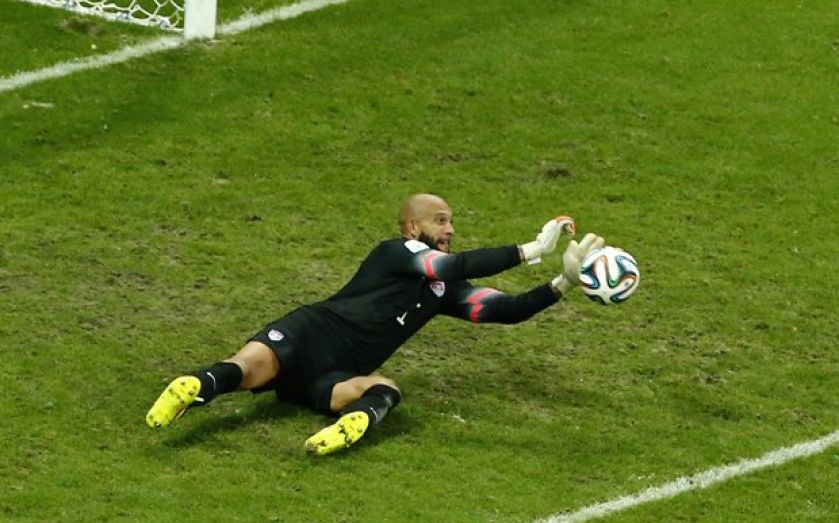How Americans learned to love football

WE BRITS have long enjoyed looking down our noses at Americans when it comes to football. They call it soccer, they get the terminology wrong, and they are inexplicably obsessed with viewing it through the prism of statistics. Making fun of all this has been a favourite pastime within our favourite pastime.
Or at least it was – because something changed during this World Cup. USA may have been sent packing by Belgium on Tuesday, but only after a critical mass of interest in the game across the pond appeared to have been reached. Could it be that, after several false dawns, the US now gets football?
Some of the numbers suggest so. The USA’s games against Ghana (16m) and Portugal (25m) both smashed American television audience records for a football match, eclipsing figures for the NBA basketball finals (18m) and baseball’s World Series (15m).
They are not just watching from their sofas, either. American fans snapped up by far the most tickets (196,838) of any nation competing in Brazil, bar the hosts, while back home they gathered to watch in vast crowds – Soldier Field in Chicago drawing 28,000 for the Belgium game.
The World Cup bled into all areas of US life. Celebrities from Tom Hanks to Mike Tyson publicly got behind the team and declared goalkeeper Tim Howard a hero, while newspapers splashed games across front and back pages (the New York Post’s headline read: GO KICK SOME ASS!).
Not everyone agreed. Right-wing columnist Ann Coulter delighted in deriding it as boring and socialist. But President Obama declared his support by watching matches from Air Force One and former secretary of state Madeleine Albright tweeted a picture of herself posing with a football.
But will this fervour translate into higher participation rates, a leading domestic competition and, ultimately, world domination? Despite 1990-2010 growth, of all sports, football is still only the fourth most-played by boys in school, and third for girls.
Major League Soccer is on the rise, with more teams joining (including Manchester City offshoot New York City FC and David Beckham’s planned Miami side), the value of franchises increasing and more stars signing up. Yet we have been here before, with neither the North American Soccer League during the 1970s nor the 1994 World Cup, staged in the US, triggering the booms some predicted.
Perhaps a tipping point will come with the growing influence of US TV networks. World Cup figures – coupled with data that shows watching the English Premier League and European Champions League is more popular with US kids than baseball, and comparable to basketball and ice hockey – explain why Rupert Murdoch’s Fox paid $500m to outbid ESPN and NBC for the rights to the 2018 tournament. The more they pay, the more influence they wield in running world football.
Maybe we Europeans are coming round to their way of thinking, too. Analytics, so beloved of US sports, have never been more prevalent in football, perhaps even giving Americans an entry point they once lacked. However quickly this love affair between the world’s most powerful nation and the planet’s most popular sport develops, one thing is for sure: the days of Brits patronising Americans about football are numbered.
Frank Dalleres is sports editor at City A.M.
